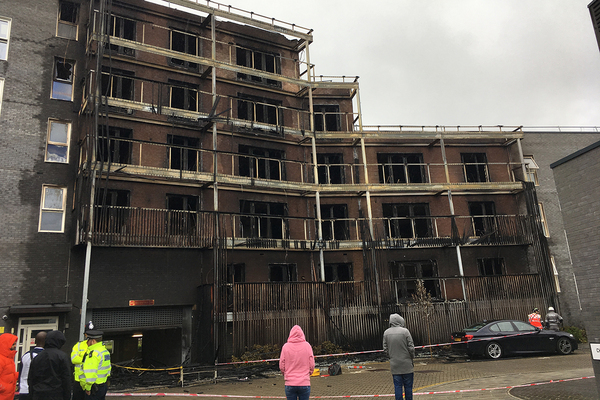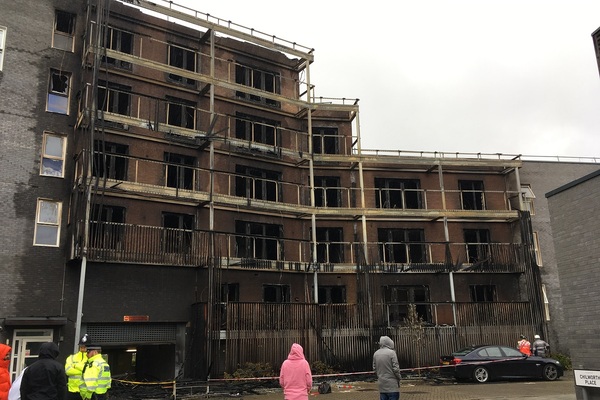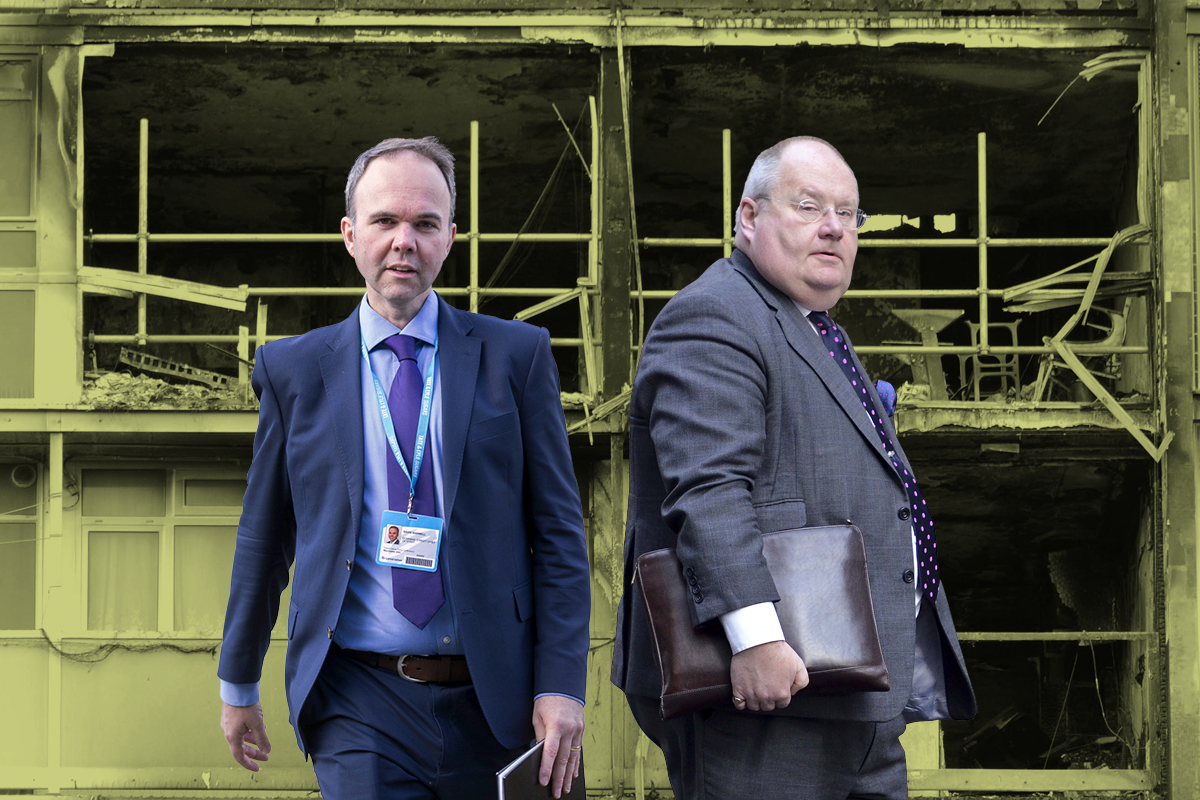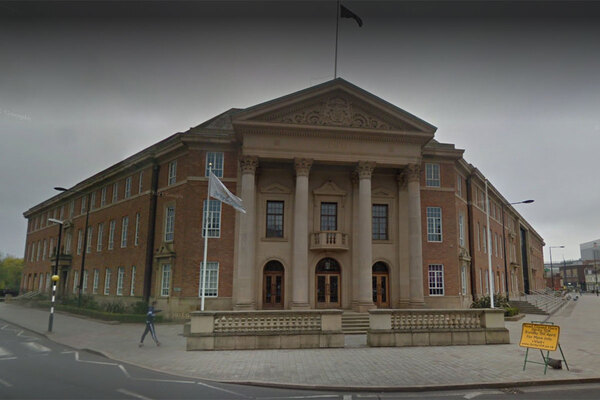You are viewing 1 of your 1 free articles
Building manager told Barking residents fire assessment identified ‘no risk’ from balconies
The boss of the company managing the Barking block hit by a fire last week said that no risk had been identified with its balconies, despite a fire risk assessment coming to light today that identified them as a “significant hazard”.
Speaking last Thursday at a meeting with residents, RMG managing director Hugh McGeever said that a fire risk assessment had been carried out on the Samuel Garside block and found there was “no factor” identified as a risk with the balconies.
Mr McGeever said: “The type one assessment looked at the building and the components; it also looked at the fact that actually, the building was fully compliant with building regulations and there was no factor that was identified as a risk with the balconies.”
He added that the only aspect that was identified as a risk was that balconies should be kept clear of anything that could cause a fire.
However, Inside Housing today revealed that a fire risk assessment commissioned by RMG in January had in fact identified the wooden balcony cladding as a “significant hazard” that “put residents at risk”.
Osterna, the fire risk assessor for the block, wrote in its assessment: “If a balcony does catch fire, it should be noted that this will accelerate fire spread by either setting the balcony above alight or entering the flats through open windows, and this will put residents and visitors at risk of smoke inhalation and burn injuries.”
The report also raised concerns around the fire alarms used on the block, as well as calling for the building’s manager to warn residents not to have BBQs on the balconies. The BBC reported last week that a barbecue “may have been the cause of the fire”. However, an investigation is yet to confirm this.
A spokesperson for RMG said: "The only management actions relating to the balconies that arose from the fire risk assessment were to clarify that the balcony system was compliant and inform residents not to store flammable materials on the balcony areas. These actions were undertaken following the fire risk assessment.”
Last week a devastating fire ripped through the Samuel Garside block causing damage to 47 apartments. The building was clad in ThermoWood, which is Class D fire rated if untreated.
RMG is a subsidiary of Places for People, one of the country’s largest landlords, and was the manager for the block. It was appointed by the building’s manager, HomeGround, to carry out the day-to-day management of the block. HomeGround is owned by Adriatic Land, the owner of Samuel Garside, and the company responsible for the building’s fire safety. Bellway was the block’s developer.
The type one fire risk assessment is the lowest level of fire risk assessment you can carry out on a building.
Inside Housing can now reveal that RMG has started a type four risk assessment on the block that will require more intrusive checks on the building’s structure.
The assessment, which began on Tuesday, will carry out a “systematic and structured” examination of the likelihood of a fire and the likely consequences for residents.
It will see the fire risk assessor and contractor carry out “opening up works”, and will also take place in Samuel Garside’s adjoining blocks: Leslie Hitchcock House, Ernest Websdale House, John Miller House, George Wheeler House and Stephen Tuckwell House.
RMG full response
"In the residents meeting Hugh stated that there were no risks in the report relating to the balconies which were of concern. Mr McGeever was aware of the full actions surrounding the Fire Risk Assessment and it was accurate to say at the time that the only ongoing concern, originally identified in the assessment, was flammable items that had potentially been left on balconies, an important issue which had been raised with residents on site following the fire.
"The report recommendations are split into two parts, ‘Risks’ which are items the assessor identifies that need addressing and secondly ‘Management Actions’. These are areas the assessor requires further clarification on or management practices which should be adopted as good practice. There were no risks associated to the cladding system which were highlighted. There were two management actions. Firstly to confirm the compliance of the structure, which was completed with the developer responding the systems were compliant for a building under 18 metres, and secondly to ensure the balconies were free from any combustible items such as BBQ’s. RMG wrote to the residents to address this and it was reiterated with residents following the fire because there was a concern that items had not been cleared."
*This response was added at 10:20 on 20/06/2019











